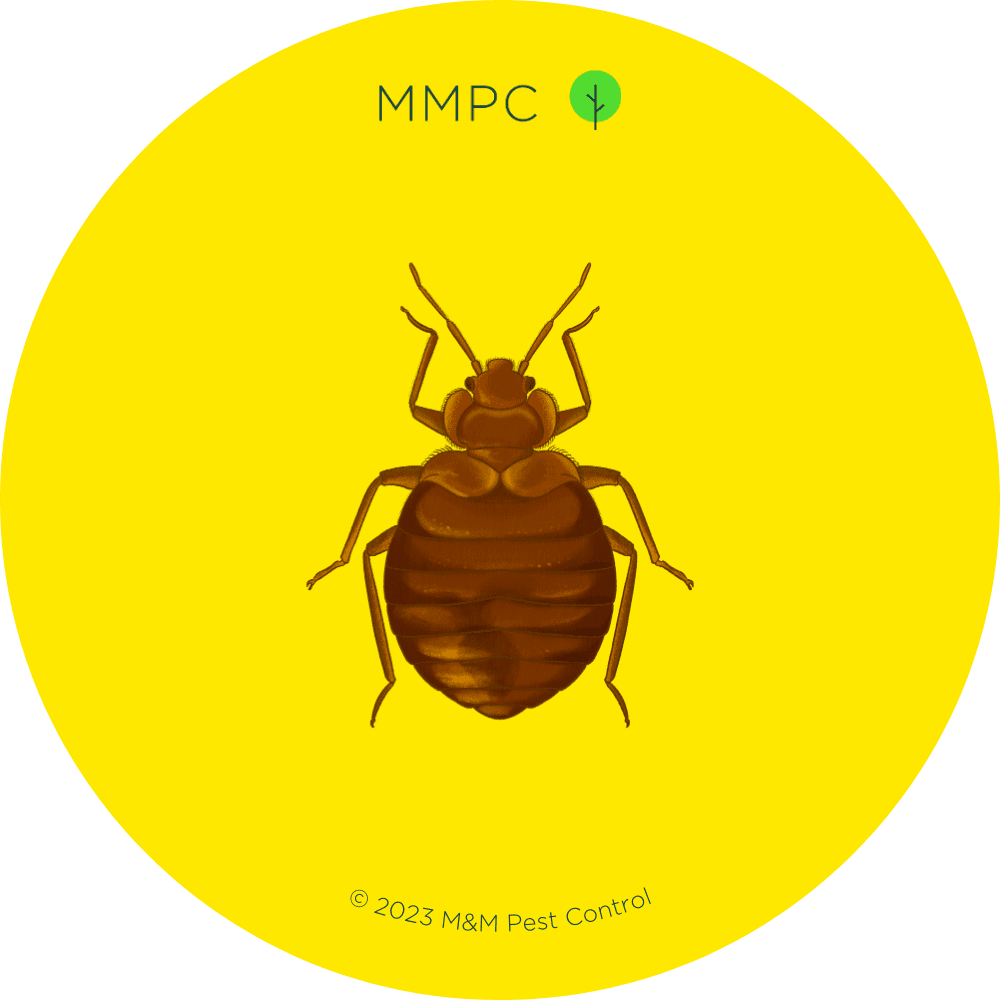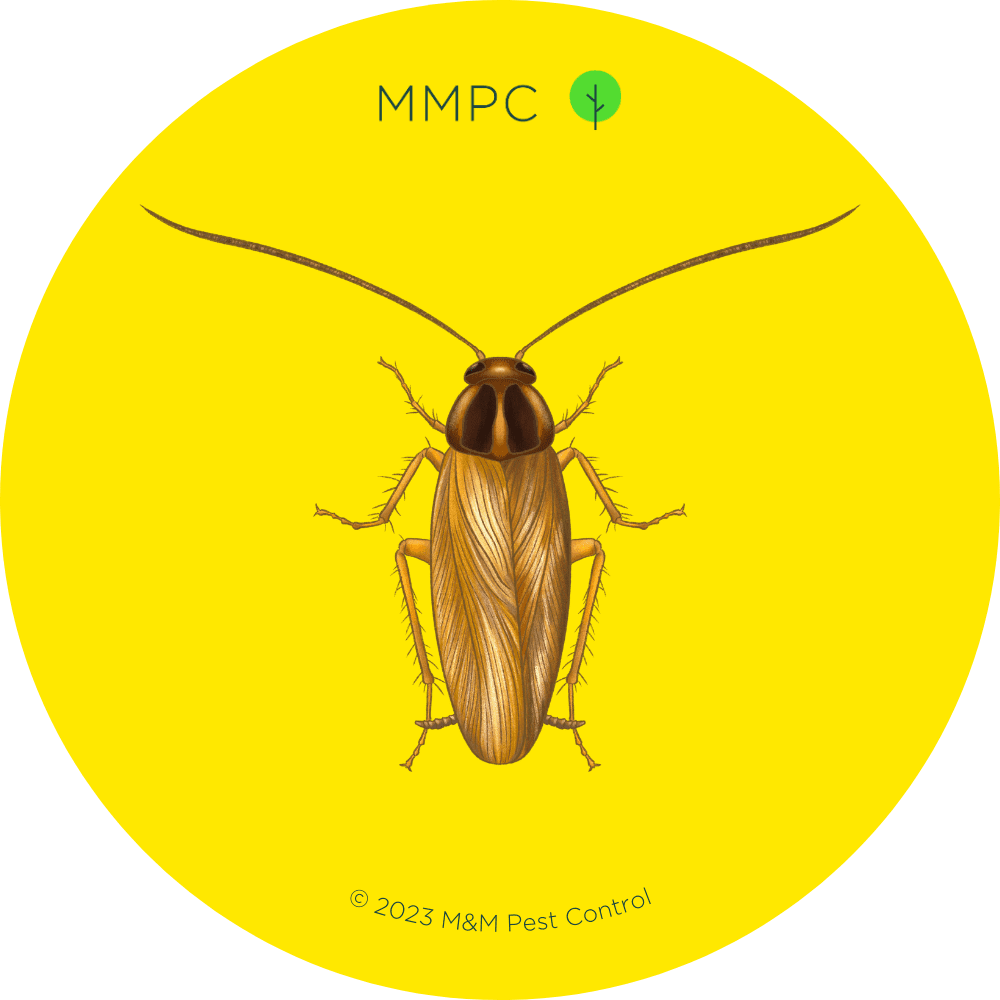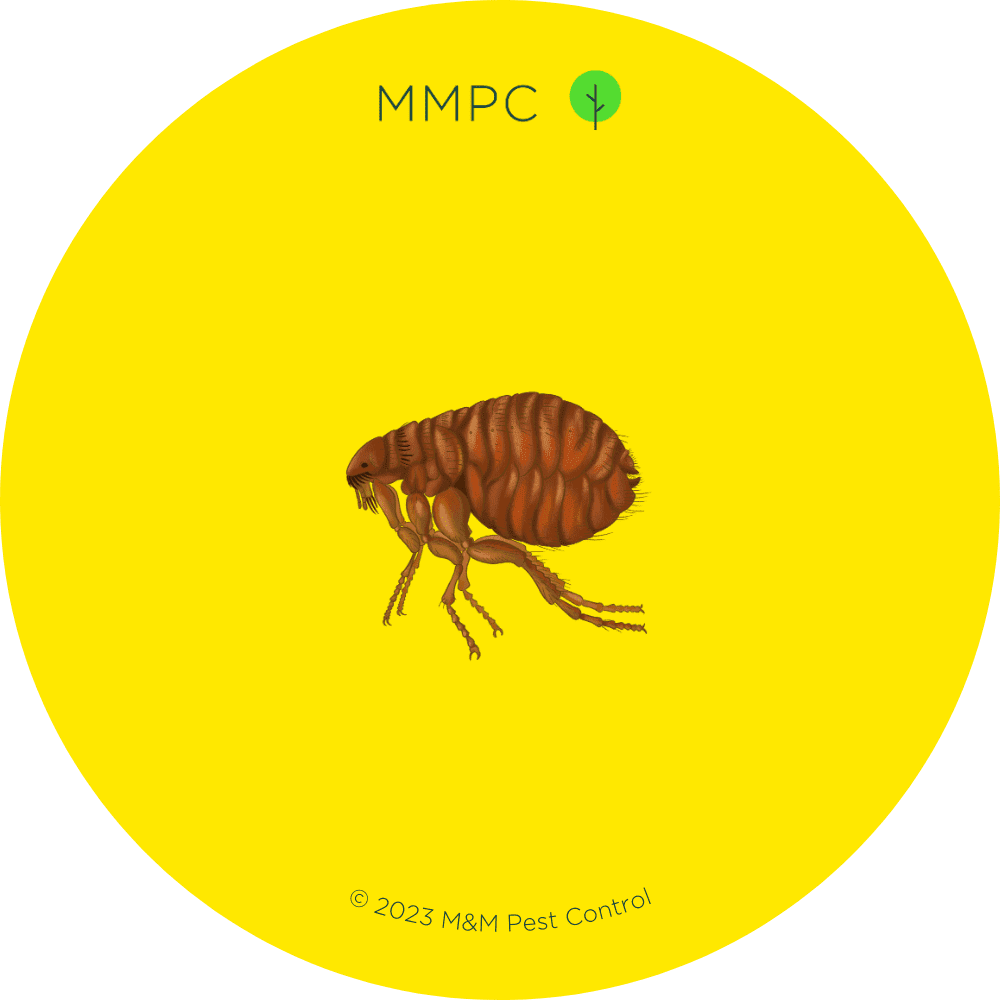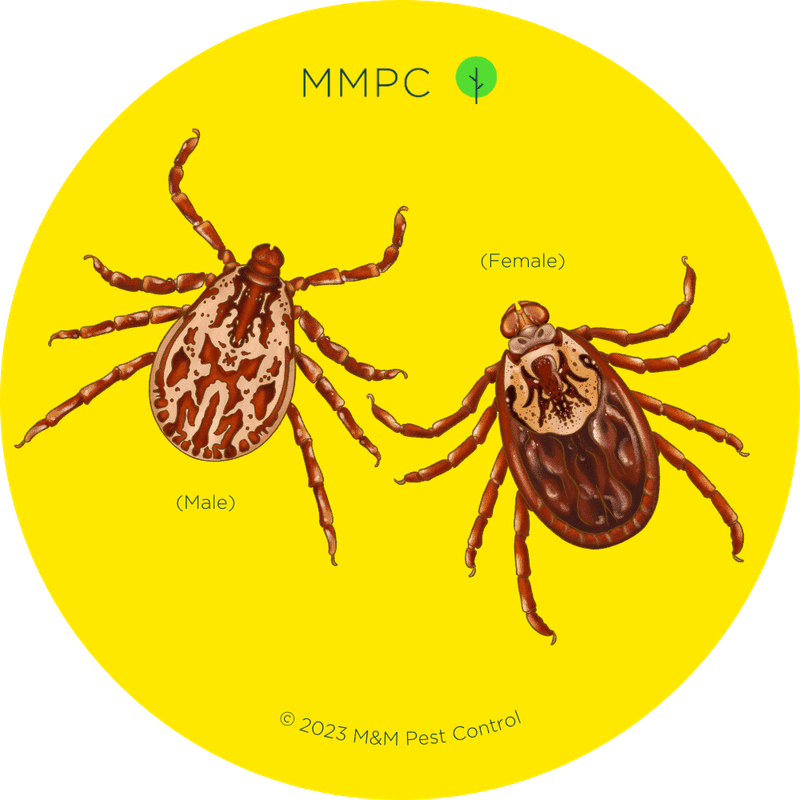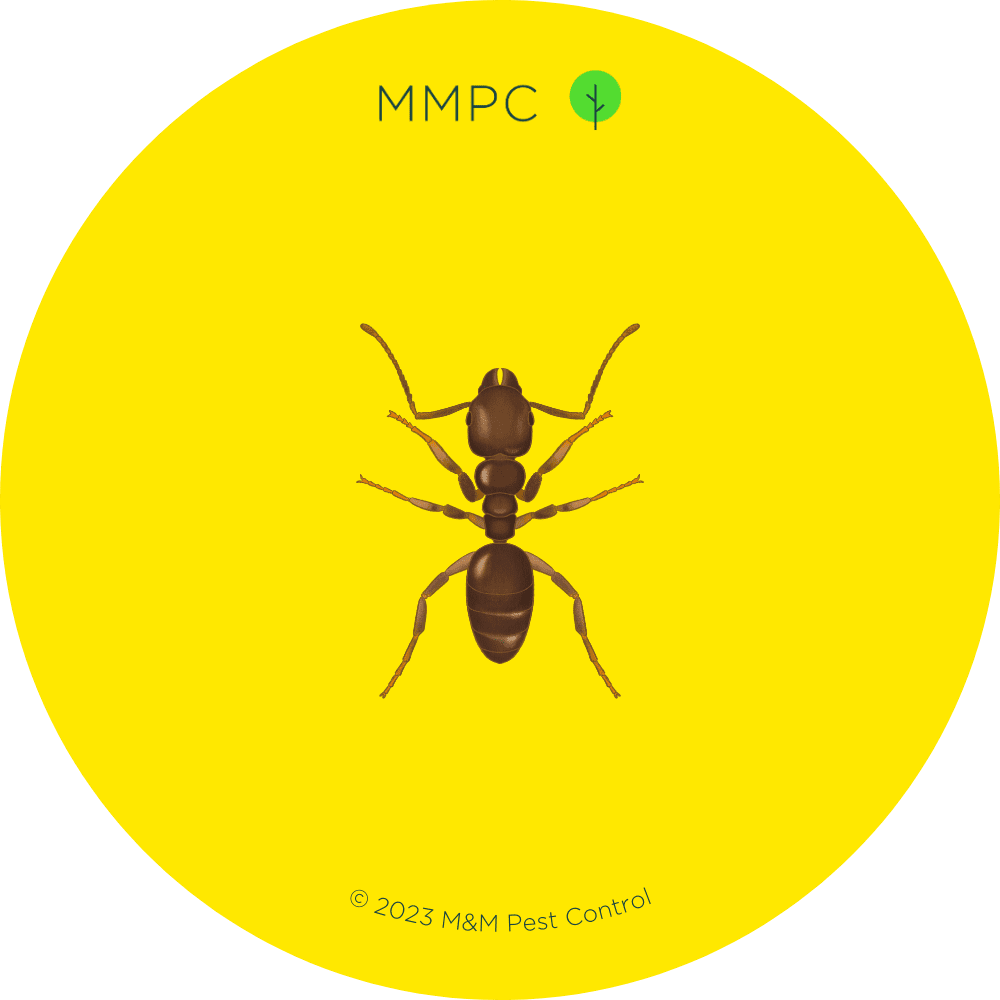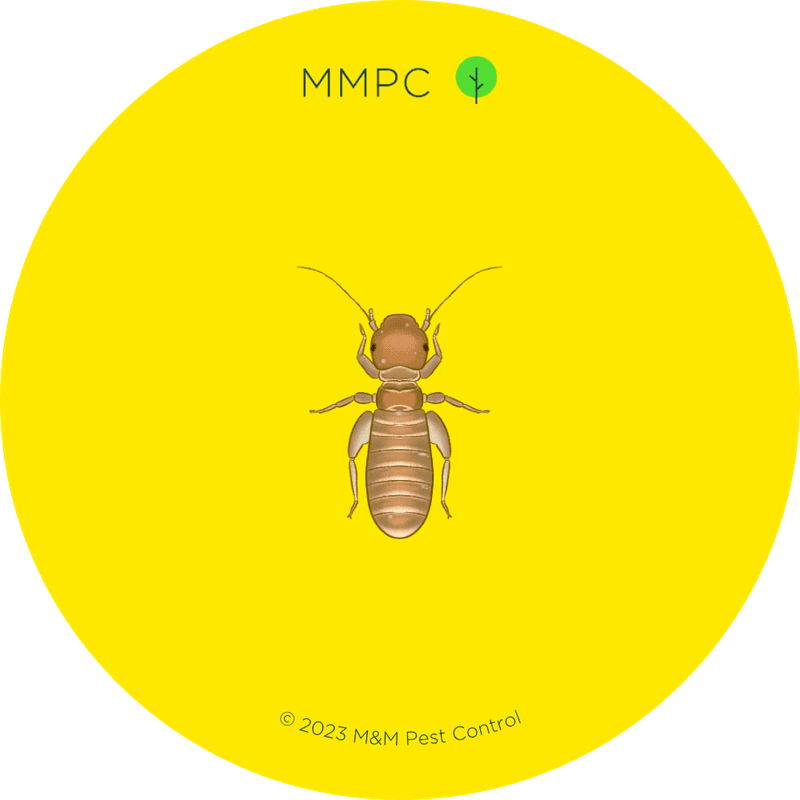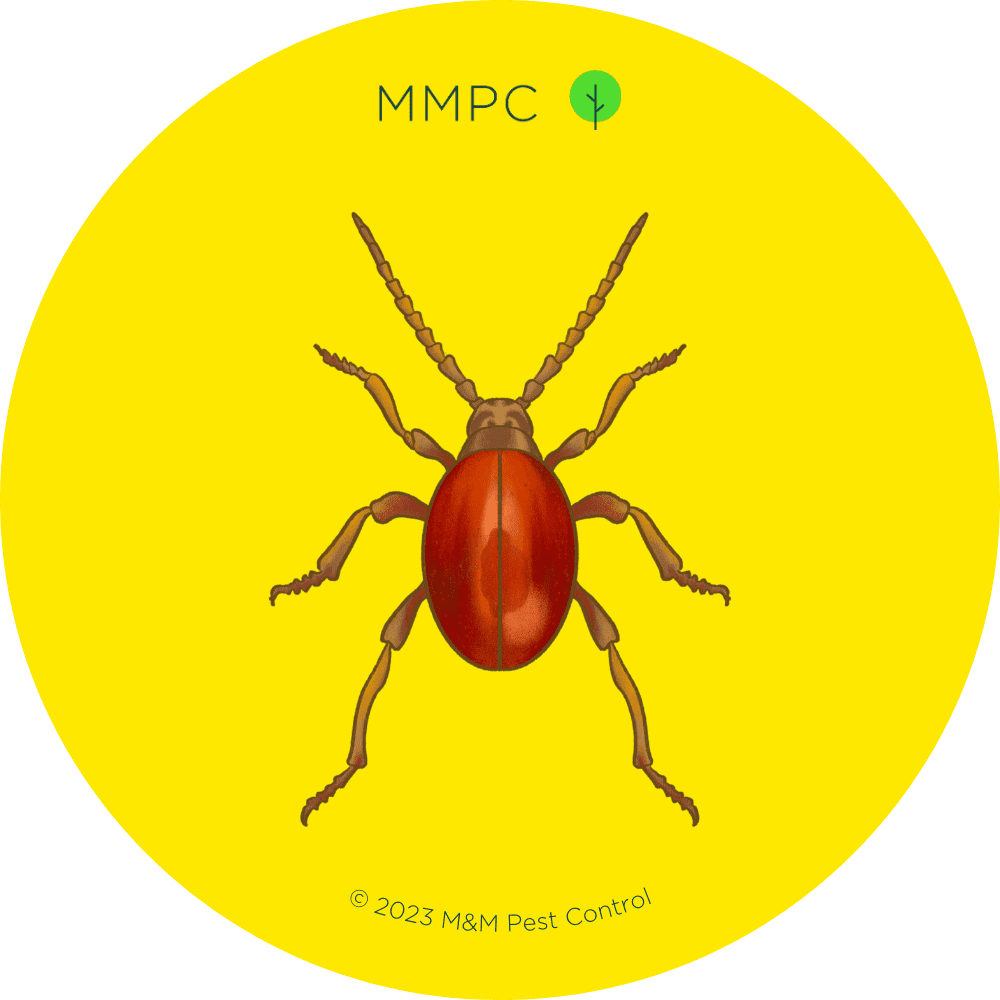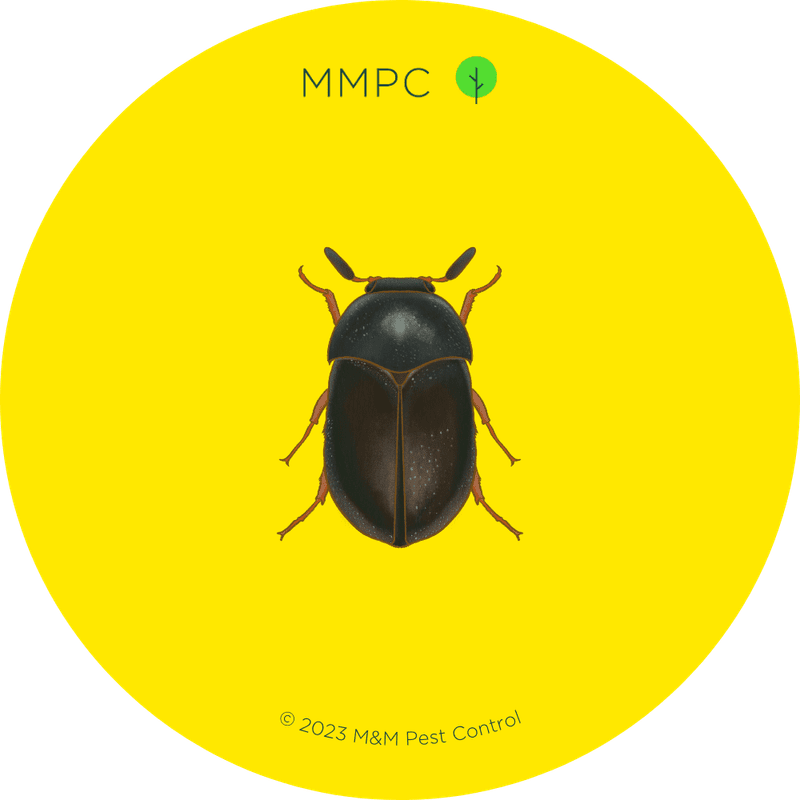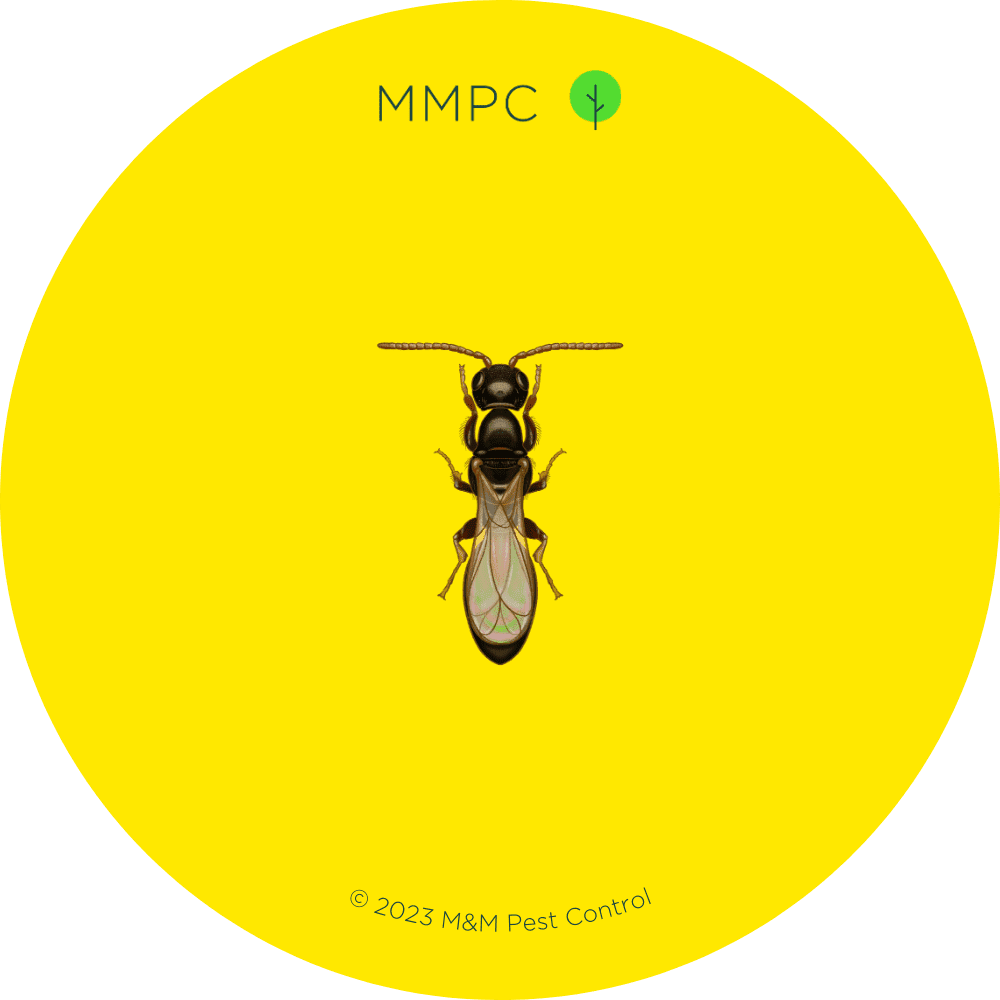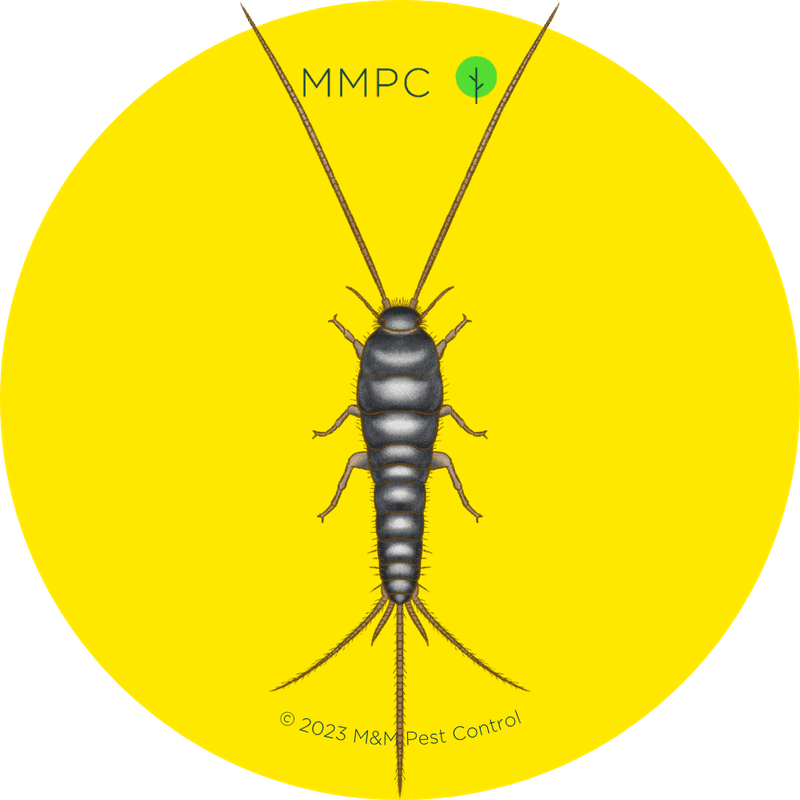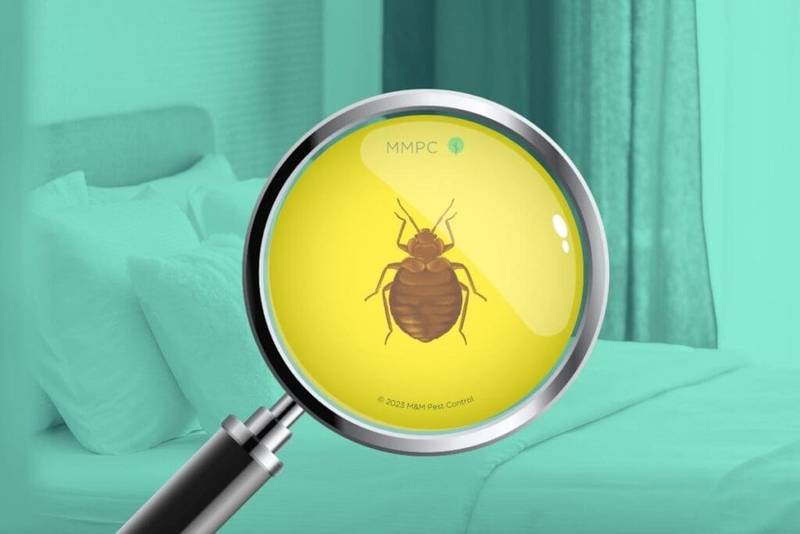
Waking up and finding an unexpected tiny visitor in your bed can be disconcerting, to say the least.
Most people immediately think of bed bugs, but there are many other types of small bugs that might find their way into or around your bed looking for food or a place to hide. Fortunately, most of them are much easier to deal with than bed bugs.
If you’ve found a small bug in your bed and are having trouble identifying it, you’re in the right place. In this article, we’ll cover the most common bedroom intruders (in New York, at least) and help you learn how to identify them.
Small Bugs Found in Beds:
- Bed Bugs
- Cockroaches
- Fleas
- Ticks
- Ants
- Booklice
- Spider Beetles
- Carpet Beetles
- Carpet Beetle Larvae
- Bethylid Wasps
- Silverfish
1. Bed Bugs
Bed bugs are nocturnal bloodsuckers that thrive in environments close to their human hosts. They are attracted to the carbon dioxide we exhale, as well as our body heat and odors.
Consequently, these cues lead them to crawl into our beds during the night. During the day, they like to hide in dark and narrow spaces, such as mattress seams, bed frames, cracks, and crevices.
Here’s how to tell if the small bug in your bed is a bed bug:
General Appearance
- Size: About the size of a small apple seed. Adults range from 1/6–1/4 inch (4–7 mm), while nymphs (baby bed bugs) can be as small as 1/16 inch (1.5 mm).
- Color: Reddish-brown, though after feeding they can appear redder due to consumed blood.
- Shape: Oval and flattened from top to bottom, but becomes long and bloated after feeding.
- Identification: Bed Bug (Adult), Bed Bug (Nymph)
Other Signs
- Bites: Red, itchy bites that may appear in lines or clusters
- Bloodstains: May be evident on sheets, especially if bed bugs are inadvertently crushed during feeding.
- Fecal Spots: Tiny black or brown specks on bedding and mattresses.
- Shell Casings: As they mature, bed bugs molt and leave behind these translucent exoskeletons.
- Eggs: Tiny, white, and about the size of a pinhead.
If You Find a Bed Bug:
- Wash bedding in hot water and dry on the highest heat setting.
- Vacuum your bedroom thoroughly, focusing on the mattress, bed frame, and any cracks or crevices. Dispose of the vacuum contents in a sealed bag outside your home.
- Consider getting a certified canine bed bug inspection (using specially-trained bed bug sniffing dogs). This type of inspection is recommended to accurately gauge the scope of a bed bug infestation before deciding what type of treatment is needed.
2. Cockroaches
Cockroaches are nocturnal scavengers that flourish in environments with easy access to food and water. Drawn to crumbs, spills, and even the slightest of food odors, they often venture into human habitats.
While they primarily favor kitchens and bathrooms, a sighting in a bedroom isn’t unusual, especially if food is consumed there. By day, these pests prefer dark, concealed spaces, like under furniture, within wall cracks, and behind clutter.
Here’s how to tell if the small bug in your bed is a cockroach:
General Appearance
- Size: Varies by species, but common ones like the German cockroach measure around 1/2–5/8 inch (13–16 mm).
- Color: Typically brown to dark brown, but some species, like the American cockroach, are a reddish-brown.
- Shape: Elongated and flattened, with thread-like antennae and wings that rest flat against their backs.
- Identification: German Cockroach, American Cockroach, Oriental Cockroach, Brown-Banded Cockroach
Other Signs
- Clutter: Messy bedrooms are more likely to have cockroaches because they’re drawn to clutter.
- Droppings: Resembling coffee grounds or black pepper, often found in areas of activity.
- Odor: Cockroaches emit a musty, distinct odor that can taint items they’ve been in contact with.
- Egg Capsules: Brownish, oblong casings that may contain numerous eggs. Often spotted near food sources or tucked away in hidden locations.
If You Find a Cockroach:
- Clean and vacuum your bedroom, especially in corners and under furniture. Wipe down surfaces to remove any food residues or crumbs.
- Inspect and seal cracks in walls, gaps around windows, and spaces beneath doors. Roaches can enter through surprisingly small openings.
- Reduce food and water sources. Never leave food out, and fix any leaking pipes or faucets in nearby rooms.
- Set up roach traps or bait stations to capture any other roaches that might be lurking in your bedroom.
3. Fleas
If you have pets at home, especially cats and dogs, the small bug in your bed might just be a flea. Fleas are tiny, wingless insects that primarily feed on the blood of animals. They might end up in your bed after hitching a ride on your pet.
Here’s how to tell if the small bug in your bed is a flea:
General Appearance
- Size: Typically, they span about 1/16–1/8 inch (1.5–3 mm) in length.
- Color: Characteristically reddish-brown.
- Shape: Oval, wingless, and laterally flattened (lays flat on its sides) with long, spiny hind legs.
- Identification: Cat Flea
Other Signs
- Bites: Human flea bites typically manifest as minute, red, itchy dots often surrounded by a reddened halo. They might cluster or form lines, predominantly around the ankles or legs.
- Animal Distress: Pets that scratch incessantly or seem agitated could be signaling a flea problem.
- Flea Dirt: Essentially flea excrement, this appears as minuscule black or reddish-brown flecks. Upon moistening, they reveal a red hue due to the blood consumed by the flea.
- Flea Eggs: These are microscopic, white, and oval, frequently detected in areas pets frequent.
If You Find a Flea:
- Wash all bedding, linens, and clothes in hot water and then dry them on the highest heat setting. This will kill any fleas and their eggs.
- Vacuum your entire bedroom, focusing on the bed area, under furniture, and any carpeting.
- If you have pets, there’s a high chance they brought the fleas inside. Check your pets for fleas and consult a veterinarian for treatment.
4. Ticks
Ticks are small, blood-feeding ectoparasites that belong to the arachnid family, making them relatives of spiders and mites. They are vectors for several tick-borne diseases, including Lyme disease and Rocky Mountain spotted fever.
Finding a tick in your bed might occur due to a household member or pet recently visiting tick-infested areas and unknowingly bringing them indoors on clothing or fur.
Here’s how to tell if the small bug in your bed is a tick:
General Appearance
- Size: Ticks vary widely in size based on their species and feeding status. Unfed ticks can be as small as a poppy seed (1/16 inch or 1 mm) in their larval stage, and as large as a flax seed (1/5 or 5 mm) in their adult form. Engorged ticks (after feeding) are noticeably larger and swollen.
- Color: Depending on the species, ticks can be brown, black, reddish-brown, or even translucent in color.
- Shape: They possess a flattened, oval body. This body becomes more rounded and engorged as they feed. Being arachnids, adult ticks have 8 legs, while their larval form has only 6. They also have distinct, long mouthparts, or capitulum, extending forward from their heads.
- Identification: American Dog Tick / Wood Tick, Brown Dog Tick, Deer Tick / Eastern Black-Legged Tick, Lone Star Tick
Other Signs
- Bites or Rashes: Tick bites may appear as small red bumps or rashes. Some people may experience swelling, burning, itching, or even a rash. Lyme disease, transmitted by certain ticks, often manifests as a red, circular “bull’s-eye” rash around the bite site. However, not all tick bites lead to symptoms, and many can go unnoticed.
- Flu-Like Symptoms: Not directly a sign of ticks but of potential diseases they transmit. Symptoms like fever, fatigue, headache, muscle or joint aches can follow a tick bite, particularly if the tick transmitted a pathogen.
- Recent Outdoor Activities: Spending time outdoors in woody or grassy areas increases your chances of picking up a tick.
If You Find a Tick:
- If the tick is attached to you or a pet, use fine-tipped tweezers to grasp it as close to the skin’s surface as possible and pull upward with steady, even pressure. Clean the bite area and your hands with rubbing alcohol, an iodine scrub, or soap and water.
- Do NOT try to kill it by crushing it with your fingers (this may cause infectious fluid to leak out). Instead, kill it by submerging it in alcohol, wrapping it tightly in tape, or flushing it down the toilet.
- If you’ve been bitten and show symptoms of a tick-borne disease (rashes, fever, fatigue, headaches, and muscle or joint aches), take a photo of the tick or place it in a sealed bag or container for identification. An expert can identify the species, which can help in determining the potential diseases it might carry.
5. Ants
While kitchens are their usual hunting ground due to easily accessible food, finding an ant in your bedroom is not entirely out of place, especially if you tend to snack in bed. While foraging for food, ants might venture onto your bed seeking crumbs or sweets.
Here’s how to tell if the small bug in your bed is an ant:
General Appearance
- Size: Varies by species. Common household ants, like the odorous house ant or pavement ant, measure around 1/8–3/16 inch (3–4 mm). Carpenter ants, which are larger, can be up to 1/2 inch (13 mm).
- Color: Colors range from light brown to black. Some species might have reddish or yellowish hues.
- Shape: Segmented bodies with a distinct head, thorax, and abdomen. Most species have elbowed antennae and a constricted waist consisting of 1 or 2 nodes between the thorax and abdomen.
- Identification: Odorous House Ant, Pavement Ant, Carpenter Ant
Other Signs
- Food in Bed: Ants are mainly attracted by food, and even tiny amounts of food or drink residue can lure ants into your bed.
- Trails: Ants, especially when foraging, often move in defined trails guided by pheromones. Observing such trails can lead you to their source or nest.
- Odor: Some ants, like the odorous house ant, release a distinct scent when crushed (often described as smelling like rotten coconut).
If You Find an Ant:
- Check your bedroom for more ants, especially near walls, windows, and other entry points.
- Ensure no food crumbs or spills are present, as these might be attracting them.
- If you suspect there’s a colony nearby, consider using ant baits. The worker ants will carry the poisoned bait back to the colony, eventually eliminating the entire population.
6. Booklice
Booklice, or psocids, thrive in environments with high humidity and an abundance of starchy food sources.
Contrary to their name, they are not truly lice and do not feed on blood. Instead, they are drawn to mold, fungi, grains, and the glue found in books and wallpaper.
Here’s how to tell if the small bug in your bed is a booklouse:
General Appearance
- Size: Very small, usually between 1/25–1/6 inch (1-4 mm) in length.
- Color: Typically pale, ranging from translucent white to gray or light brown.
- Shape: Soft-bodied, elongated, and somewhat flattened with long, threadlike antennae.
- Identification: Booklice
Other Signs
- High Humidity: Booklice thrive in environments with elevated humidity levels. A damp bedroom or bedding can attract them.
- Presence of Mold or Mildew: These pests are drawn to mold and mildew, which might be present in damp mattresses, pillows, or bedding.
- Starchy Food Sources: Booklice feed on starches, fungi, and molds. If you store books or papers near your bed or have wallpaper, the glue can attract booklice. Additionally, organic materials like grains or dead skin cells can serve as food sources.
If You Find a Booklouse:
- Booklice thrive in damp and humid environments. Use a dehumidifier or increase ventilation in your bedroom to reduce humidity levels. Fix any leaks and ensure proper ventilation in areas like bathrooms or basements adjacent to your bedroom.
- Vacuum and declutter the area, especially piles of paper, books, or storage boxes where booklice might hide.
- Look through stored papers, books, and cardboard boxes in the vicinity. These are common places for booklice to reside, especially if they have been exposed to moisture. If you find infested items, place them in a sealed plastic bag. For books or non-sensitive items, consider placing them in the sun or a warm, dry place to kill the booklice and reduce moisture.
- Silica gel or other desiccants can help reduce moisture in stored items, preventing booklice infestations.
7. Spider Beetles
Spider beetles are nocturnal scavengers. They’re typically more of a pantry pest, as they feed on grains and dried food products, but they may wander into bedrooms when attracted by food residues or crumbs in or near the bed. They also favor dark, undisturbed areas with high humidity, making certain bedroom areas appealing.
Here’s how to tell if the small bug in your bed is a spider beetle:
General Appearance
- Size: Spider beetles are small, usually measuring around 1/16–1/8 inch (1.5–3.5 mm) in length.
- Color: Their color can range from reddish-brown to almost black.
- Shape: Their appearance is oval-shaped and somewhat spider-like, with long, slender legs and a large, bulbous abdomen. They have long antennae, which can sometimes be mistaken for an additional pair of legs.
- Identification: Shiny Spider Beetle, American Spider Beetle
Other Signs
- Larvae: Larvae are cream-colored, C-shaped, and can be found in food sources.
- Webbing: In areas of heavy infestation, spider beetles might produce web-like materials similar to what pantry moths produce.
- Food Damage: If they’ve migrated from a pantry or food storage area, you might find damaged grains, cereals, or dried foods.
- High Humidity: Spider beetles thrive in environments with lots of moisture. If your bedroom has high humidity, it might be more inviting to these beetles.
If You Find a Spider Beetle:
- Vacuum your bedroom and remove any clutter or items stored under the bed or in closets.
- Check stored foods, especially in pantries or cabinets near your bedroom. Dispose of any contaminated items in sealed plastic bags.
- Store food items, especially grains or dried goods, in airtight containers. This not only protects your food but also deters spider beetles and other pests.
8. Carpet Beetles
Adult carpet beetles don’t actually feed on carpets or fabric materials (only their larvae do), but you may occasionally find one that wandered into your bed or bedroom in search of breeding sites. They prefer dark, undisturbed areas near furniture, carpets, and rugs to deposit their eggs.
Because carpet beetles are of similar size and shape as bed bugs, they are commonly misidentified as such.
Here’s how to tell if the small bug in your bed is a carpet beetle:
General Appearance
- Size: Adult carpet beetles measure around 1/16 to 1/8 inch (2–3 mm) in length.
- Color: Depending on the species, they can range from black to mottled with white, brown, and yellow patches.
- Shape: Typically oval, somewhat resembling ladybugs but smaller. While they have wings and can fly, they’re often found crawling
- Identification: Varied Carpet Beetle, Black Carpet Beetle, Furniture Carpet Beetle
Other Signs
- Larvae: Often more problematic than adults, carpet beetle larvae are small, hairy, and caterpillar-like, feeding on the same materials as adults but causing more damage.
- Shed Skins: As larvae grow, they molt and leave behind translucent, bristle-covered skins.
- Fabric Damage: You might notice tiny holes or chewed areas in natural fabrics, especially wool, silk, or feathers.
- Fecal Pellets: Tiny, round, and dark, these droppings from larvae can be found in areas of activity.
If You Find a Carpet Beetle:
- Check carpets, rugs, curtains, upholstered furniture, closets, and other fabric-containing items for other beetles and their larvae, which resemble small, fuzzy worms with brown bands.
- Vacuum the bedroom thoroughly, especially around carpets, floors, windowsills, and other areas where carpet beetles are found. Using a steam cleaner will also help kill the larvae and eggs.
9. Carpet Beetle Larvae
Carpet beetle larvae are more problematic than their adult forms. They feed on natural fibers, carpets, woolen fabrics, and animal hairs. It’s not uncommon for them to end up in your bed, especially if there are fabric materials they find attractive.
Here’s how to tell if the small bug in your bed is a carpet beetle larva:
General Appearance
- Size: Typically between 1/8 to 3/16 inch (3–5 mm) long.
- Color: Brown or tan, sometimes with patches of white or yellowish tufts of hair.
- Shape: Tapered or elongated, and slightly segmented. They might look worm-like at a glance. Their bodies are covered with dense, bristly hairs, which can sometimes form patterns or “tufts.” At the rear end, they often possess a tuft of longer hairs, resembling a tail.
- Identification: Black Carpet Beetle, Varied Carpet Beetle, Furniture Carpet Beetle
Other Signs
- Shed Skins: As they grow, these larvae molt, leaving behind their old, translucent skins.
- Fabric Damage: They chew holes through textiles, especially those made from natural fibers. You might notice irregularly shaped holes in fabrics, carpets, or upholstered furniture.
- Presence in Pantries: While their primary food sources are textiles, carpet beetle larvae also consume dried foods, so you might find them in your pantry as well.
- Fecal Pellets: Small, round, and the same color as the consumed fabric or food.
If You Find a Carpet Beetle Larva:
- Vacuum meticulously to eliminate larvae, eggs, and the hairs they shed, which can cause allergic reactions in some people.
- Wash bedding, linens, and any clothes that may have come in contact with the larvae in hot water. Then dry them on the highest heat setting to ensure all larvae and eggs are killed.
- Carpet beetle larvae can easily move to adjacent rooms. Inspect other areas of your home to ensure the infestation hasn’t spread.
10. Bethylid Wasps
Occasionally you might stumble upon a more uncommon bug in your bed, such as a bethylid wasp.
Bethylid wasps are parasitoids, laying their eggs inside the larvae of other insects (such as carpet beetles). Once their larvae hatch, they consume the host insect from the inside.
While these wasps are generally not considered dangerous to humans, they will occasionally sting if threatened.
Here’s how to tell if the small bug in your bed is a bethylid wasp:
General Appearance
- Size: Typically very small, most species are less than 1/8 inch (3 mm) long.
- Color: Generally brown or black, but some species can have a more metallic appearance.
- Shape: Flat, ant-like bodies with long antennae. Females have small stingers and are wingless; males do not have stingers and have clear or slightly tinted wings.
- Identification: Bethylid Wasp
Other Signs
- Stings: Bethylid wasps aren’t aggressive but may sting humans if they feel threatened, which feels like a needle prick followed by an itchy red welt.
- Beetle Infestation: As they target other insect larvae, bethylid wasps are typically found if you have an existing or recent infestation of carpet beetles or pantry beetles.
If You Find a Bethylid Wasp:
- Look for signs of beetles or other pests. If there are bethylid wasps in your bedroom, there are likely other pests present that they parasitize. Check stored food items, especially grains, for signs of infestation. Discard any contaminated goods.
- The best way to get rid of bethylid wasps is resolving the underlying pest infestation that attracted them in the first place.
11. Silverfish
Silverfish are slender, silvery insects that prefer dark, moist environments, which is why they occasionally find their way into beds and bedrooms, especially those with high humidity. These insects mainly feed on things that contain starches and can sometimes be found munching on starched linens, bedding, clothing, and papers.
Here’s how to tell if the small bug in your bed is a silverfish:
General Appearance
- Size: Typically 1/2 to 3/4 inch (12-19 mm) in length.
- Color: Silvery to a grayish-brown, which gives them their name.
- Shape: Tapered or carrot-shaped, with a slender body that narrows towards the tail and 3 long tail-like appendages sticking out of the rear end.
- Identification: Silverfish
Other Signs
- Damage to Paper or Fabrics: If you notice tiny, irregular-shaped holes in papers, books, or textiles, it might be the work of silverfish.
- Yellowish Stains: Silverfish can leave behind yellowish stains on linens and paper.
- Shed Skins: As silverfish molt throughout their lives, they may leave behind their shed skins which resemble a smaller version of their adult form.
If You Find a Silverfish:
- Examine your room for more silverfish, especially in dark and moist areas, such as under furniture, inside wardrobes, and around baseboards.
- Silverfish thrive in damp environments. Use a dehumidifier, and consider increasing ventilation to reduce moisture levels in your bedroom. Address any leaks or sources of dampness promptly.
- Silverfish are attracted to paper, glue, and certain fabrics. Store books, photographs, and important papers in airtight containers. If you have clothing, especially natural fibers, that you don’t wear frequently, consider sealing them in bags.
Didn’t Find Your Bug on This List?
MMPC is an eco-friendly pest control company based in New York City, so this article is focused on common bugs found in and around the New York Area. Besides the common ones listed in this article, there may be other types of small bugs that might occasionally invade beds and bedrooms, especially if you live in other states or countries.
If the bug you found doesn’t match anything on this list, take a picture and send it to MMPC’s Free Pest ID Center. One of our expert entomologists will help identify it for you.

